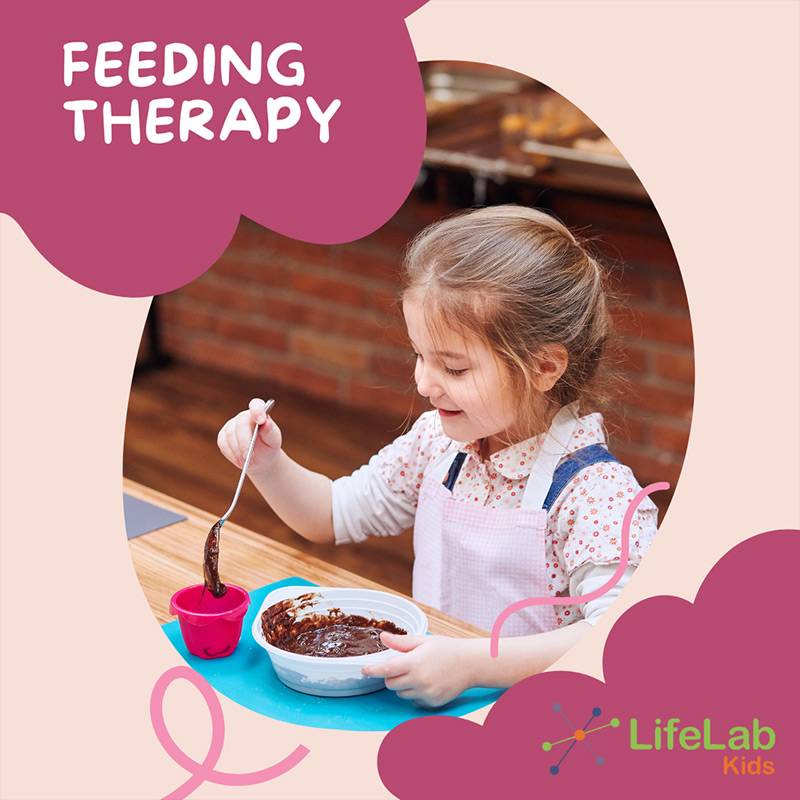Long Island's Selection for Food Therapist Providers
Wiki Article
Browsing the Path to Effective Feeding: Ingenious Techniques and Interventions for Reliable Feeding Treatment
Are you battling to locate efficient approaches and treatments for successful feeding treatment? Look no further. This post will guide you through the course to success, giving cutting-edge strategies to assess feeding challenges and set achievable goals. With evidence-based strategies, you'll learn how to address sensory handling problems and utilize assistive innovation and adaptive devices. And also, we'll reveal you the significance of working together with family members and caregivers for optimal feeding end results. Get all set to navigate the course to effective feeding!Assessing Feeding Difficulties and Recognizing Objectives
You should start by evaluating your kid's feeding difficulties and determining certain objectives for their treatment. This action is important in creating an efficient feeding treatment strategy. Begin by observing your child's feeding actions and patterns. Seek any troubles or aversions they may have towards specific foods or appearances. Keep in mind of any type of sensory or physical problems that might be impacting their capacity to eat. When you have determined these difficulties, you can after that establish details objectives for their therapy. These goals should be obtainable and reasonable, concentrating on boosting your child's feeding abilities and general nutrition. As an example, you may set an objective for your child to be able to endure a larger selection of structures or to self-feed with tools. It is very important to interact these goals with your kid's feeding therapist so they can tailor the therapy sessions to address these details difficulties. By evaluating your youngster's feeding difficulties and setting objectives, you are taking the initial step towards helping them establish effective feeding skills.Implementing Evidence-Based Approaches for Feeding Therapy
Implementing evidence-based techniques for feeding treatment can bring about favorable outcomes for children. You are guaranteeing that the interventions made use of are sustained by scientific research study and have been shown efficient when you include these methods into your child's treatment plan. This strategy enhances the likelihood of success and assists resolve the details feeding obstacles your child may be experiencing.By complying with evidence-based strategies, you can provide your youngster with the very best feasible care and assistance. These techniques might consist of using a variety of sensory experiences throughout mealtimes, such as checking out different textures and flavors, to urge approval of new foods. Additionally, executing behavior alteration strategies can aid resolve particular eating practices and advertise much healthier eating patterns.
Another vital element of evidence-based feeding therapy is entailing the household in the treatment procedure. By offering education and learning and assistance to caretakers and parents, they can play an active role in helping their youngster get over feeding obstacles. This collective method boosts the performance of therapy and advertises long-term positive changes in your youngster's eating behaviors.

Resolving Sensory Processing Issues in Feeding Therapy
Attending to sensory handling problems in feeding treatment can be difficult, however it is crucial for promoting a positive consuming experience for kids. When you run into a youngster with sensory handling problems during nourishment, it is vital to recognize that their reactions to certain textures, preferences, scents, and even sounds are not willful (feeding therapy long island). By recognizing and addressing these concerns, you can assist create an encouraging atmosphere that encourages healthy consuming practices
This method enables the kid to end up being familiar with the food and its sensory properties at their very own rate. Additionally, supplying a selection of appearances and flavors can assist desensitize their sensory system and expand their food choices.
Involving the kid in sensory play activities can additionally be beneficial. Encourage them to discover different structures, such as squishing, squeezing, or touching numerous food things. This can help stabilize sensory input and decrease aversions to certain structures.
Another vital facet is offering a tranquil and structured eating atmosphere. Lessen distractions, such as loud noises or brilliant lights, which can bewilder their detects and hinder their capability to concentrate on consuming. Creating a predictable regular and using visual routines can additionally help the kid really feel even more secure and in control during nourishment.

Utilizing Assistive Innovation and Adaptive Equipment
Utilizing assistive technology and flexible tools can significantly improve the feeding experience for youngsters with sensory handling problems. When you have problem with sensory handling, mealtime can be overwhelming and tough. With the right tools, you can make it a much more enjoyable and successful experience.One choice is using specialized plates and tools developed to suit your needs. These tools might have textured deals with or a bigger grip, making them much easier to control and hold. Plates with separated areas can aid separate different foods and avoid them from touching, which can be a resource of discomfort for some kids.
Along with specialized utensils and plates, there are likewise assistive tools that can be used during feeding. For instance, a heavy vest or lap pad can provide deep pressure input, aiding to calm and control your sensory system. A vibrating tooth brush or chewable fashion jewelry can supply oral sensory stimulation, making the act of consuming extra pleasurable.
Innovation can additionally contribute in address boosting the feeding experience. There are apps and gadgets offered that can give aesthetic or auditory hints, such as timers or motivates, to aid you stay concentrated and arranged throughout nourishment.
Collaborating With Households and Caregivers for Effective Feeding Outcomes
When collaborating with families and caregivers, you can interact to produce a caring and encouraging setting for successful feeding results. By including households and caregivers in the feeding therapy process, you can gain valuable insights right into the youngster's feeding challenges, behaviors, and choices. food therapist farmingdale. This cooperation enables an all natural approach to feeding treatment, resolving not just the physical facets but additionally the psychological and emotional elements that may influence a kid's feeding capabilitiesOne key aspect of teaming up with caretakers and family members is supplying education and learning and training. By outfitting them with understanding and skills, they can actively participate in the feeding therapy process and sustain the youngster's development outside of therapy sessions. This can consist of educating them feeding methods, strategies for managing nourishment habits, and understanding the value of consistency and routine in developing healthy consuming habits.
In addition, involving family members and caregivers in setting goal and treatment planning makes certain that their point of views and objectives for the child are considered. By interacting, you can establish practical and achievable objectives that align with the household's worths and top priorities - feeding therapy long island. This collective technique cultivates a sense of possession and empowerment, developing a strong structure for effective feeding outcomes
On top of that, regular and open interaction with caretakers and families is crucial for efficient cooperation. By maintaining continuous dialogue, you can deal with worries, supply assistance, and make essential adjustments to the feeding therapy plan as needed. This communication also enables sharing development updates, commemorating success, and recognizing any kind of challenges or obstacles that may arise.

Final Thought
Congratulations on completing this write-up on browsing the course to successful feeding! You have explored different techniques and treatments for efficient feeding treatment, such as evaluating obstacles, applying evidence-based techniques, addressing sensory processing concerns, and using assistive modern technology. By working together with caretakers and families, you can make sure successful feeding outcomes. Bear in mind to always stay Recommended Site cutting-edge and proactive in your method to feeding treatment. Maintain the wonderful work!It's important to connect these goals with your youngster's feeding specialist so they can tailor the therapy sessions to attend to these specific difficulties.Implementing evidence-based approaches for feeding treatment can lead to positive end results for kids.Attending to sensory processing issues in feeding click here to find out more treatment can be challenging, yet it is necessary for advertising a positive consuming experience for children. By including households and caregivers in the feeding therapy process, you can gain valuable insights right into the youngster's feeding obstacles, practices, and preferences. By furnishing them with knowledge and skills, they can proactively take part in the feeding therapy procedure and sustain the kid's progress outside of therapy sessions.
Report this wiki page